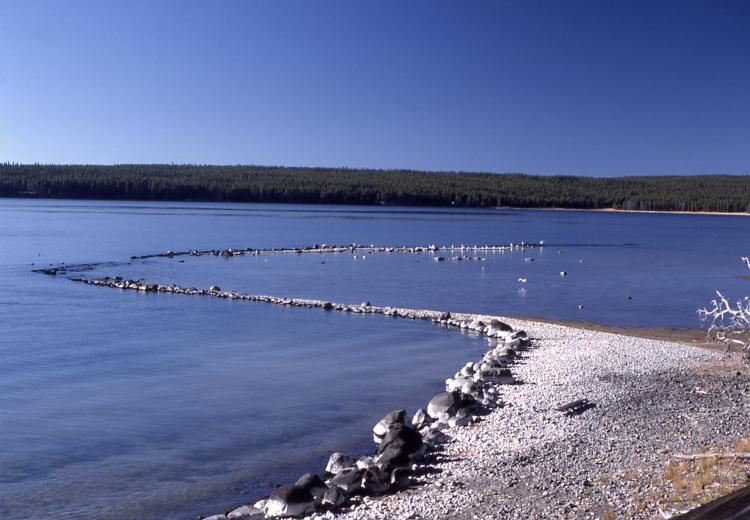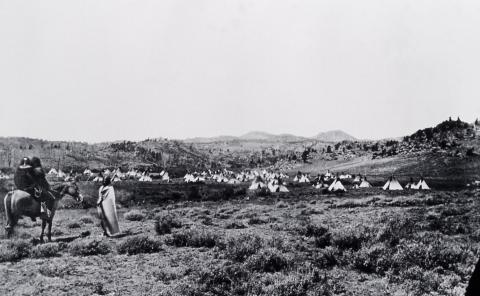Through the lens of history, students will be able to understand the origins and evolution of the modern environmental movement. At the beginning of the twentieth century—in response to the effects of mass industrialization and urbanization—some Americans advocated regulation and protections for public lands and these reformers formed two camps: preservationists and conservationists. Preservationists, such as John Muir, promoted the idea that nature and the environment should be protected from abuse. His preservation efforts throughout the 1890s and early 1900s culminated in the establishment of Yosemite, Grand Canyon, and Sequoia national parks. His vision served as an impetus for the eventual establishment of the National Park Service in 1916.
Conservationists argued that there are proper and responsible ways that federally owned lands can be used for recreation and industrial purposes. Theodore Roosevelt and Gifford Pinchot, the first chief of the US Forest Service, were prominent proponents for conservation. Conservation influenced the management of national forests and transformed them into vehicles for economic growth. Across the country, ski resorts, campgrounds, and hiking trails are located in national forests, and lumber from federal lands have been used to construct homes and furniture. While it appears the preservation and conservation movements are incongruous, both underscore the need to restore and protect public lands for posterity.
Indigenous Land Rights
Early reformers of the environmental movement, however, failed to acknowledge the continued existence and land rights of Indigenous tribes across the nation. The disregard for the connections Native Americans retained with their homelands resulted in the federal government forcibly removing or refusing to acknowledge the presence of tribes to establish new national parks. The history of Yellowstone National Park, the nation’s first national park, elucidates the violence perpetrated against Native American tribes under the guise of preservation. Members of the Crow, Shoshone, and Bannock tribes inhabited the land enclosed within the park’s boundaries and surrounding areas. They used the land to hunt for animals and conduct controlled burns. By 1879, government officials forcibly removed all of the remaining Native inhabitants from Yellowstone. Sects of different tribes, such as the Bannock tribe, returned to Yellowstone on a seasonal basis to hunt. The Fort Bridger Treaty of 1868 authorized the right of the Bannock and Eastern Band of the Shoshone tribes to hunt within Yellowstone, park managers pursued measures to terminate the tribes’ use of the land. This behavior stemmed from the federal government’s idealized interpretation of the state in which Yellowstone should be preserved.
The prohibition of low-intensity fires by Captain Moses Harris, the first military superintendent of Yellowstone, and the passage of the Yellowstone Hunting Act of 1894, which prohibited the hunting of all wild animals, threatened the cultural ties tribes retained with the land. The 1896 Supreme Court case, Ward v. Race Horse, ruled that when Wyoming became a state in 1890 the hunting rights granted to the Shoshone and Bannock tribes in the Fort Bridger Treaty were effectively terminated. Through military force and aggressive legislative tactics, government officials constructed a façade and initiated a practice implemented in other national parks around the country. The legacy of this policy is an issue that has yet to be completely rectified.
Post-WWII Environmentalism
In the years following World War II, white middle-class families that fled to the suburbs took interest in the consequences of environmental hazards to their health. This awareness combined with an increase in the use of nature as a source of recreation spurred a new wave of environmentalists who spearheaded grassroots efforts to combat issues such as pollution.
During the 1960s, leaders of the Chicano and Civil Rights movement raised concerns about the consequences of public health hazards on local communities. Cesar Chávez mobilized farmworkers to protest for better working conditions, specifically protection from harmful chemicals, in the early 1960s. On May 16, 1967, Black residents in Houston picketed a city landfill that caused the death of an 8-year-old Black child. In February of 1968, Martin Luther King Jr. traveled to Memphis, Tennessee to provide support to Black sanitation workers protesting against polluted and dangerous work conditions.
Public outcry in the wake of environmental crises such as the 1969 Santa Barbara oil spill forced Congress and President Nixon to address the severity of human impact on the environment. Within the span of four years, Congress passed the National Environmental Policy Act of 1969, The Clean Air Act of 1970, The Clean Water Act of 1972, and the Endangered Species Act of 1973. In 1970, President Nixon established the Environmental Protection Agency, and the inaugural Earth Day occurred on April 22.
Environmental Justice
The roots of the contemporary environmental justice movement can be traced back to the 1980s when African Americans, Hispanics, Latinx, Asian Americans, and Indigenous communities, among others, highlighted the intersections between social justice and environmentalism. They brought to public attention how industrial facilities that contaminated the air and water supply were disproportionally placed adjacent to marginalized and low-income areas.
In September of 1982, African American residents of Warren County, NC mobilized to protest against the dumping of PCB, a chemical that can cause birth defects and damage to human organs, contaminated soil in their community. When the dump trucks arrived at the site, community activists blocked the entrance by lying down on the roads that led to the landfill. For the next six weeks, residents of Warren County organized multiple protests and marches. More than 500 environmentalists and civil rights activists were arrested. While their efforts proved unsuccessful, this protest captured the nation’s attention and served as an impetus for the modern environmental justice movement.
Environmental historians continue to ask questions and conduct research about the relationship between humans and the environment, and consider debates regarding the proper role of government in addressing injustices related to climate, land, water, and air. Below are some questions to encourage students to think about the environment through a historical lens:
- How does environmental history intersect with other fields such as the history of politics, industrialization, immigration, and labor, among others?
- To what extent is environmental justice a civil rights issue?
- How does examining environmental disasters and crises build upon other forms of historical research?
- Why would environmental disasters be remembered and memorialized?
- How can studying changes in the environment throughout history inform us about contemporary issues?





